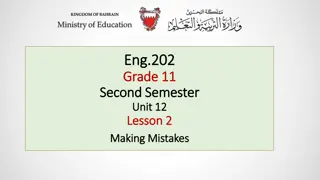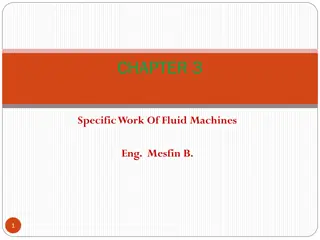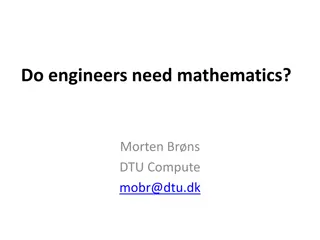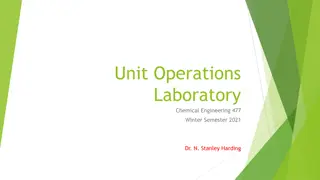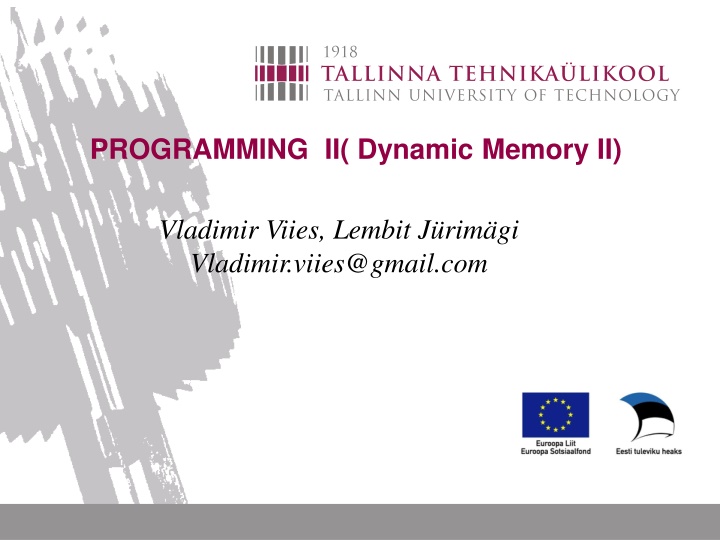
Advanced Concepts in Programming II: Structures, Pointers, and Dynamic Memory Allocation
Explore advanced topics in programming including structures, pointers, and dynamic memory allocation. Learn about complex data types, function returning structures, visualizing pointers and arrays, accessing structure members using pointers, and dynamic memory allocation. Enhance your programming skills with these essential concepts.
Download Presentation

Please find below an Image/Link to download the presentation.
The content on the website is provided AS IS for your information and personal use only. It may not be sold, licensed, or shared on other websites without obtaining consent from the author. If you encounter any issues during the download, it is possible that the publisher has removed the file from their server.
You are allowed to download the files provided on this website for personal or commercial use, subject to the condition that they are used lawfully. All files are the property of their respective owners.
The content on the website is provided AS IS for your information and personal use only. It may not be sold, licensed, or shared on other websites without obtaining consent from the author.
E N D
Presentation Transcript
PROGRAMMING II( Dynamic Memory II) Vladimir Viies, Lembit J rim gi Vladimir.viies@gmail.com
STRUCTURES Complex data type It consist of other data types (int, char, float etc) typedef struct employee { int employeeCode; char firstName[15]; char lastName[15]; float salary; } employee;
Structure in the memory struct employee { int employeeCode; char firstName[15]; char lastName[15]; float salary; }; 0 4 19 36 39 emplCo firstName lastName salary Structure size in memory = the size of its members + padding In this case, the structure is 38 bytes + padding 2016 4
Function returning a structure Reminder: structure was a data type, albeit a complex one. This means that we can also use it as a return type for a function. We can return one whole structure per function call. We could also return a structure pointer as we ll see in a few weeks typedef struct point { int x, y; } point; A prototype for a function point enterPoint() point enterPoint(){ point temporary; temporary.x = 5; temporary.y = 7; return temporary; } 2016 5
Pointers and arrays visualized int array[] = {5, 3, 7, 3, 5}; int *p; p = array; *p 48F9AC9 1 array[0] array[1] array[2] array[3] array[4] 5 3 7 3 5 *(p + 0) *(p + 1) *(p + 2) *(p + 4) *(p + 3) 2016 6
Pointers and structures You can point to the start of a structure or an element inside it. typedef struct employee{ int employeeCode; char firstName[15]; char lastName[15]; float salary; } employee; employee manager; employee *pStr; pStr = &manager; 2016 7
Accessing members using pointers Both of these are equal (*pStr).employeeCode; (*pStr).fName; (*pStr).lName; (*pStr).salary; pStr->employeeCode; pStr->fName; pStr->lName; pStr->salary; 2016 8
Dynamic allocation (references) A. D. Marshall. Programming in C. UNIX System Calls and Subroutines using C. http://www.cs.cf.ac.uk/Dave/C/CE.html The cplusplus.com tutorial. Complete C++ language tutorial http://www.cplusplus.com/doc/tutorial/index.html The GNU C library http://www.gnu.org/software/libc/manual/html_node/
Dynamic allocation I Dynamic allocation is a pretty unique feature to C (amongst high level languages) It enables us to create data types and structures of any size and length to suit our programs need within the program
Example malloc+sizeof+free #include <stdio.h> #include <stdlib.h> int main () { int i,n; int * pData; printf ("Amount of numbers to be entered: "); scanf ("%d",&i); pData = (int*) malloc (i*sizeof(int)); for (n=0;n<i;n++) printf ("%d ",pData[n]); if (pData==NULL) exit (1); for (n=0;n<i;n++) { printf ("Enter number #%d: ",n); scanf ("%d",&pData[n]); printf ("%d \n",pData+n); } printf ("You have entered: "); for (n=0;n<i;n++) printf ("%d ",pData[n]); free (pData); printf ("After free:\n "); for (n=0;n<i;n++) printf ("%2d %d \n",pData[n],pData+n); getchar(); getchar(); return 0; }
Example calloc+sizeof+free #include <stdio.h> #include <stdlib.h> int main () { int i,n; int * pData; printf ("Amount of numbers to be entered: "); scanf ("%d",&i); pData = (int*) calloc (i,sizeof(int)); for (n=0;n<i;n++) printf ("%d \n",pData[n]); if (pData==NULL) exit (1); for (n=0;n<i;n++) { printf ("Enter number #%d: ",n); scanf ("%d",&pData[n]); } printf ("You have entered:\n "); for (n=0;n<i;n++) printf ("%2d %d\n",pData[n],pData+n); free (pData); printf ("After free:\n "); for (n=0;n<i;n++) printf ("%2d %d \n",pData[n],pData+n); getchar(); getchar(); return 0; }
Function realoc() void *realloc( void *ptr, size_t new_size); Realloc is a function which attempts to change the size of a previous allocated block of memory. The new size can be larger or smaller. If the block is made larger then the old contents remain unchanged and memory is added to the end of the block. If the size is made smaller then the remaining contents are unchanged.
Example realoc+sizeof+free #include <stdio.h> #include <stdlib.h> int main () { int input,n; int count=0; int * numbers = NULL; int * more_numbers; do { printf ("Enter an integer value (0 to end): "); scanf ("%d", &input); count++; more_numbers = (int*) realloc (numbers, count * sizeof(int)); if (more_numbers!=NULL) { numbers=more_numbers; numbers[count-1]=input; } else { free (numbers); puts ("Error (re)allocating memory"); exit (1); } } while (input!=0); printf ("Numbers entered: \n"); for (n=0;n<count;n++) printf ("%d %d\n",numbers[n],numbers+n); free (numbers); printf ("After free: \n"); for (n=0;n<count;n++) printf ("%d %d\n",numbers[n],numbers+n); getchar(); getchar(); return 0; }
Recursion 1 Recursion helps in logic building. Recursive thinking helps in solving complex problems by breaking them into smaller subproblems. Recursive solutions work as a a basis for Dynamic Programming and Divide and Conquer algorithms. Certain problems can be solved quite easily using recursion like Towers of Hanoi (TOH), Inorder/Preorder/Postorder Tree Traversals, DFS of Graph, etc.
Recursion 2 Step1 Define a base case: Identify the simplest (or base) case for which the solution is known or trivial. This is the stopping condition for the recursion, as it prevents the function from infinitely calling itself. Step2 Define a recursive case: Define the problem in terms of smaller subproblems. Break the problem down into smaller versions of itself, and call the function recursively to solve each subproblem. Step3 Ensure the recursion terminates: Make sure that the recursive function eventually reaches the base case, and does not enter an infinite loop.
Recursion3 In programming languages, if a program allows you to call a function inside the same function, then it is called a recursive call of the function. void recursion() { recursion(); /* function calls itself */ } int main() { recursion(); return; } The C programming language supports recursion, i.e., a function to call itself. But while using recursion, programmers need to be careful to define an exit condition from the function, otherwise it will go into an infinite loop.
Recursion in C In C programming language, when a function calls itself over and over again, that function is known as recursive function. Recursion is the process of repeating items in a self-similar way . Process of function calling itself repeatedly is known as recursion.
Explain the functionality /* Assume that n is greater than or equal to 1 How are n and the number of repetitions related?*/ int fun1(int n) { if (n == 1) return 0; else return 1 + fun1(n / 2); }
Bad recursion example #include <stdio.h> void func(void) { printf("\n This is a recursive function \n"); func(); } int main(void) {int n, i=5; for (n=0;n<i;n++) {printf (" %d\n",n); func(); return 0; }
Factorial example #include <stdio.h> int func(int num) { int res = 0; if(num <= 0) { printf("\n Error \n");} else if(num == 1) { return num; } else { res = num * func(num -1); return res; } return -1; } int main(void) { int num = 5 ; int fact = func(num); if (fact > 0) printf("\n The factorial of [%d] is [%d]\n", num, fact); return 0; }
Fibonaci example #include <stdio.h> int fibonaci(int i) { if(i == 0) { return 0; } if(i == 1) { return 1; } return fibonaci(i-1) + fibonaci(i-2); } int main() { int i; for (i = 0; i < 10; i++) { printf("%d\t\n", fibonaci(i)); } return 0; }
Bonus task I Write a program to sort a sequence of numbers using a binary tree (Using Pointers). A binary tree is a tree structure with only two (possible) branches from each node (Fig. 1). Each branch then represents a false or true decision. To sort numbers simply assign the left branch to take numbers less than the node number and the right branch any other number (greater than or equal to). To obtain a sorted list simply search the tree in a depth first fashion.
Bonus task III ALGORITHM hanoi(a, b, c, n) a b c --- --- hanoi(a, c, b, n-1) hanoi(c, b, a, n-1) a b c 02.11.2000 lesanne. Algoritm. Programm 26
HANOI & RECURSION #include <stdio.h> void move(int number, char source,char buf,char dest); void main(void){ int number; printf("Enter number of disks to rearrange...\n"); scanf("%i", &number); move(number, 'A', 'B', 'C'); return 0; } void move(int disk, char source, char dest, char buf){ if(disk==1){ printf("Moving disk %i from peg %c to peg %c\n", disk, source, dest); //if it is the last disk to be placed } else{ //repeats one move over and over (taking from source, putting to destination, then taking from source, putting to buff, then stacking those two together move(disk-1, source, buf, dest); printf("moving disk %i from peg %c to peg %c\n", disk, source, dest); move(disk-1, buf, dest, source); } }
Summary of Recursion There are two types of cases in recursion i.e. recursive case and a base case. The base case is used to terminate the recursive function when the case turns out to be true. Each recursive call makes a new copy of that method in the stack memory. Infinite recursion may lead to running out of stack memory. Examples of Recursive algorithms: Merge Sort, Quick Sort, Tower of Hanoi, Fibonacci Series,
TEST II (15p) Create a program in C using dynamical memory allocation, with the given requirements: User enters the names of the input and output files na1, na2, nt1, nt2. From file na1 following structure should be read in: county char[] city char[] From file na2 read in: name char[] address struct: city char[] street char[] house int Sort the records from file na2 by the county (in alphabetical order) and save them to file nt1 and output them also on the terminal screen. To file nt2 output all the records from input data that could not be associated and outputted to the first file.
LINKED List #include <stdio.h> #include <stdlib.h> #include <assert.h> typedef struct _node{ int value; struct _node *next; } node; node *add(int val, node *root){ node *p = malloc(sizeof(node)); assert(p != NULL); p->value = val; p->next = root; return p;} void printrecursive(node *root, int idx){ if(root == NULL) //exit condition return; printf("%d: %d \n", idx, root->value); printrecursive(root->next, idx + 1);} void print(node *root){ node *p; for(p = root; p != NULL; p = p->next) printf("%d\n", p->value);} #define MAX 10000 int main(void){ int i; node *root = NULL; for(i = 0; i < MAX; i++) root = add(rand() % (2 * MAX), root); printrecursive(root, 1); //print(root); return 0; }
HOMEPAGE: http://www.tud.ttu.ee/im/Vladimir.Viies/



